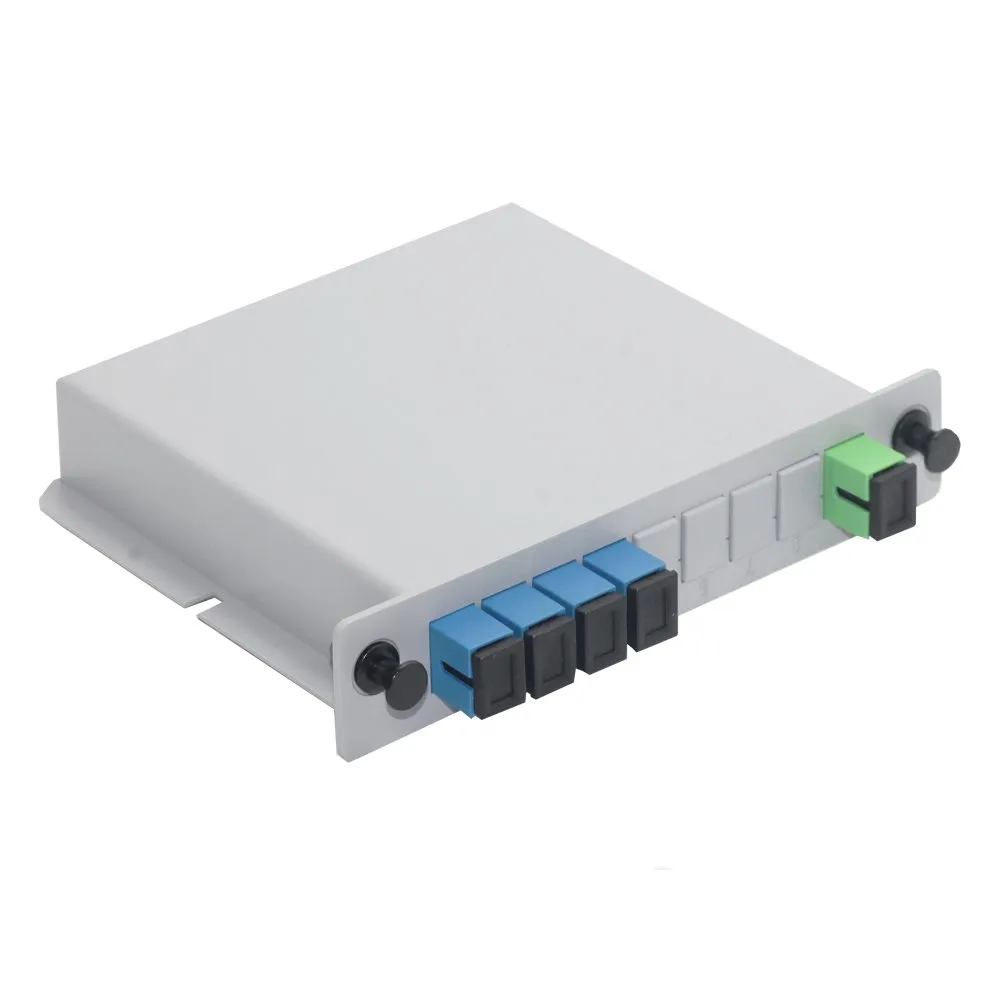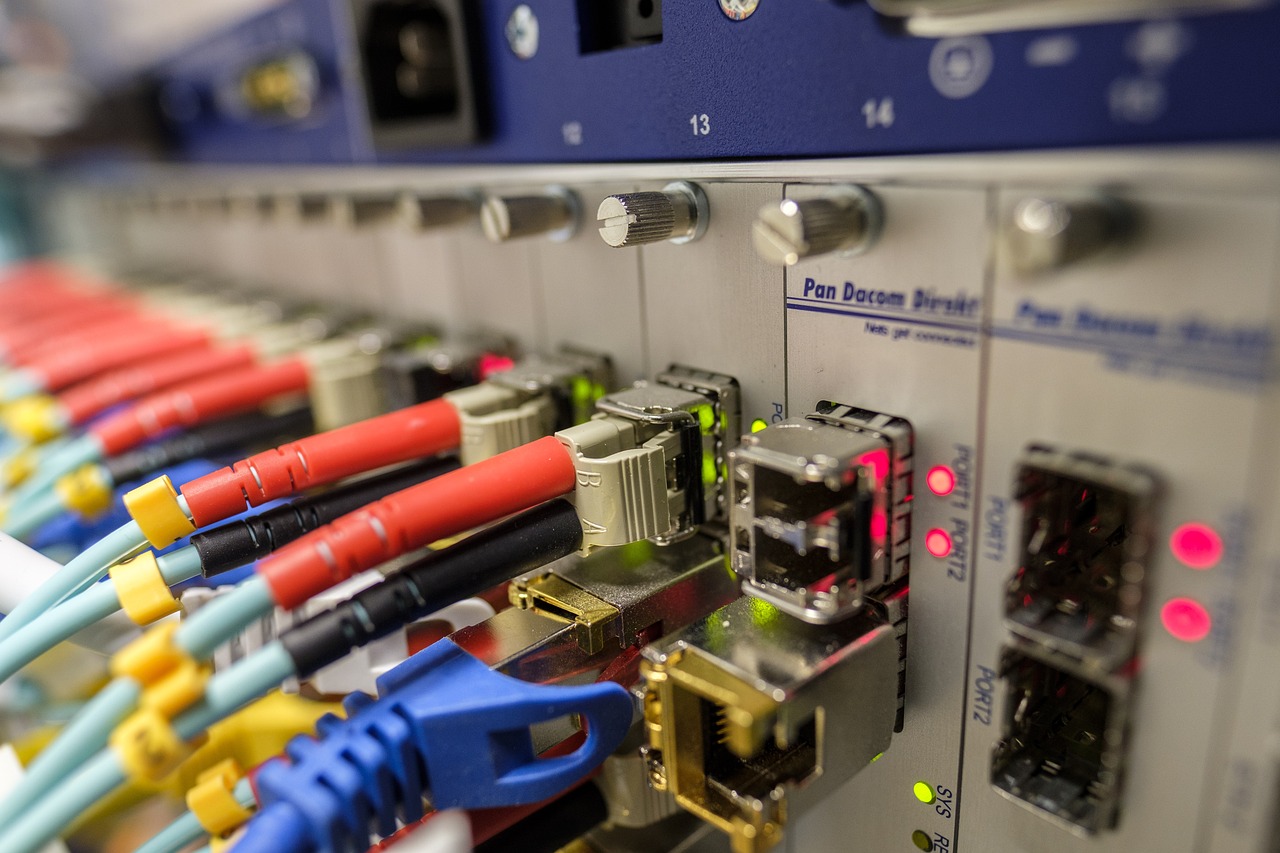How to Choose the Right PLC Optical Splitter for Your Single-Mode Fiber Network

Understanding PLC Optical Splitters
When it comes to optimizing the performance of your single-mode fiber network, PLC Optical Splitters play a crucial role. But what exactly are they, and why are they essential for your network?
What is a PLC Optical Splitter?
A PLC Optical Splitter is a passive optical component that is used to split an incoming light signal into multiple output signals. This splitting process is fundamental to the distribution of optical signals within a network. The splitter achieves this by utilizing the principles of waveguide technology, allowing for efficient and reliable light distribution.
The Basics of Light Distribution
The primary function of a PLC Optical Splitter is to divide an input optical signal into two or more output signals, enabling the transmission of data across different paths without significant loss or interference. This ensures that the integrity and quality of the transmitted signals are maintained throughout the network.
Why PLC Optical Splitters are Essential for Your Network
Integrating PLC Optical Splitters into your network infrastructure offers several key benefits that directly contribute to its efficiency and reliability.
Enhancing Network Efficiency and Reliability
By effectively splitting optical signals, PLC Optical Splitters enable seamless communication between various network components while minimizing signal degradation. This enhances overall network efficiency and reliability, ensuring consistent performance across all connected devices.
The Role of SC/APC in Your Network
When it comes to optimizing the performance of your single-mode fiber network, understanding the role of SC/APC terminations is crucial. These terminations play a significant part in enhancing signal quality and network stability.
Understanding SC/APC Terminations
The SC/APC termination, also known as the subscriber connector with an angled physical contact, holds immense importance in ensuring low back reflection within the network. This specific type of termination is designed to minimize the amount of reflected light that travels back toward the source, thereby reducing signal loss and maintaining optimal transmission quality.
The Significance of Low Back Reflection
Low back reflection, facilitated by SC/APC terminations, is essential for preserving the integrity of transmitted signals. By minimizing reflected light, these terminations effectively reduce signal degradation and ensure that data transmission remains clear and consistent throughout the network.
How SC/APC Enhances Your Network's Performance
The utilization of SC/APC terminations leads to a noticeable improvement in signal quality and network stability. The angled physical contact design minimizes signal disruption, resulting in enhanced data transmission across the network.
Improved Signal Quality and Network Stability
With SC/APC terminations, you can expect improved signal quality due to reduced interference and enhanced network stability. This directly contributes to a more reliable and efficient single-mode fiber network infrastructure.
Why Choose an LGX Cassette Module?
In the realm of single-mode fiber network infrastructure, the selection of components plays a pivotal role in ensuring optimal performance and seamless integration. When considering the implementation of LGX Cassette Modules, it's essential to understand the benefits they offer and their compatibility with PLC Splitters.
The Benefits of Using LGX Cassette Modules
One compelling reason to opt for LGX Cassette Modules is their remarkable ease of installation and maintenance. These modules are designed with user-friendly features that simplify the installation process, allowing for swift integration into existing network setups. Additionally, their modular design facilitates convenient maintenance, enabling quick access for troubleshooting or component replacement when necessary.
Moreover, LGX Cassette Modules provide a high level of flexibility, allowing for efficient scalability as network demands evolve over time. This adaptability ensures that your network can readily accommodate expansions or modifications without requiring extensive reconfiguration.
LGX Cassette Module Compatibility with PLC Splitters
When it comes to integrating PLC Splitters into your network infrastructure, ensuring seamless compatibility is paramount. LGX Cassette Modules excel in this aspect, offering robust compatibility with PLC Splitters to facilitate smooth network integration.
The standardized form factor of LGX Cassette Modules aligns perfectly with PLC Splitter requirements, allowing for straightforward deployment within rack-mounted enclosures or cabinets. This compatibility ensures that PLC Splitters can be seamlessly incorporated into the network architecture without necessitating complex adjustments or modifications.
Furthermore, the modular nature of LGX Cassette Modules enables effortless accommodation of PLC Splitters within diverse network configurations. Whether it's a centralized distribution point or a more distributed layout, these modules provide the versatility needed to support various PLC Splitter deployment scenarios effectively.
The Importance of Bend Insensitive Cables
In the realm of single-mode fiber networks, the significance of Bend Insensitive Cables cannot be overstated. These cables are engineered to withstand bending without compromising signal integrity, making them a crucial component in ensuring reliable data transmission.
What Makes Cables Bend Insensitive?
The exceptional bend resistance of these cables can be attributed to their enhanced fiber design. By incorporating specialized materials and construction techniques, manufacturers create fibers that can endure tight bends without experiencing signal loss or damage. This innovative design allows the cables to maintain consistent performance even in challenging installation scenarios where bending is unavoidable.
The Role of Enhanced Fiber Design
The enhanced fiber design of Bend Insensitive Cables involves the use of advanced protective coatings and resilient core materials. These elements work in tandem to safeguard the internal fibers from stress and strain caused by bending, preserving signal quality and minimizing the risk of data transmission disruptions.
Advantages of Using Bend Insensitive Cables in Your Network
Deploying Bend Insensitive Cables within your network infrastructure offers a multitude of benefits that directly contribute to its overall performance and reliability.
Reducing Signal Loss and Distortion
One primary advantage of utilizing Bend Insensitive Cables is their ability to significantly reduce signal loss and distortion. Traditional fiber optic cables are susceptible to signal degradation when subjected to bending, leading to compromised data transmission. In contrast, Bend Insensitive Cables mitigate this risk by maintaining consistent signal quality even under challenging environmental conditions, ensuring reliable communication across the network.
Furthermore, these cables enable more flexible deployment options, allowing for efficient routing around corners or obstacles without sacrificing signal integrity. This versatility enhances the adaptability and resilience of your network infrastructure, providing a robust foundation for seamless data transmission.
Planar Lightwave Circuit (PLC) Technology Explained
Now, let's delve into the fascinating realm of Planar Lightwave Circuit (PLC) technology and unravel its inner workings.
How Planar Lightwave Circuit (PLC) Works
The functionality of a Planar Lightwave Circuit (PLC) revolves around the intricate science of lightwave splitting. Within the PLC, incoming optical signals are meticulously guided through a planar waveguide structure, where they undergo controlled division into multiple output signals. This process is achieved through a meticulously engineered layout that ensures precise signal distribution without compromising integrity or quality.
The Science Behind Lightwave Splitting
The core principle behind lightwave splitting in a Planar Lightwave Circuit (PLC) lies in the strategic manipulation of optical signals within the planar waveguide. By leveraging advanced waveguide designs and materials, PLCs can effectively partition incoming lightwaves, enabling the creation of distinct output channels for seamless data transmission.
The Advantages of PLC Technology in Optical Splitters
Planar Lightwave Circuit (PLC) technology offers a myriad of advantages when integrated into optical splitters, making it a preferred choice for modern network infrastructures.
Low-Cost, High-Reliability Solutions for Light Distribution
One notable advantage of incorporating Planar Lightwave Circuit (PLC) technology into optical splitters is the attainment of low-cost yet high-reliability solutions for light distribution. The inherent efficiency and precision of PLC-based splitters result in minimal signal loss and enhanced reliability, all while offering cost-effective deployment options for network optimization.
In summary, understanding the underlying principles and benefits of Planar Lightwave Circuit (PLC) technology provides valuable insights into its pivotal role in shaping efficient and reliable single-mode fiber networks.
See Also
An In-Depth Look at 1x32 PLC Fiber Splitter for ABSModule Splice
Discovering the Perfect 1x16 Color Coded PLC Splitter for Blockless Package
Optimizing the Advantages of 1*16 CH, SC/APC Single Fiber DWDM Mux Demux
Key Insights into Outdoor 12-48 Core Fiber Optic Splicing Boxes
Uncovering the SC/APC Single-Mode Fiber Optic Connector for FTTH


